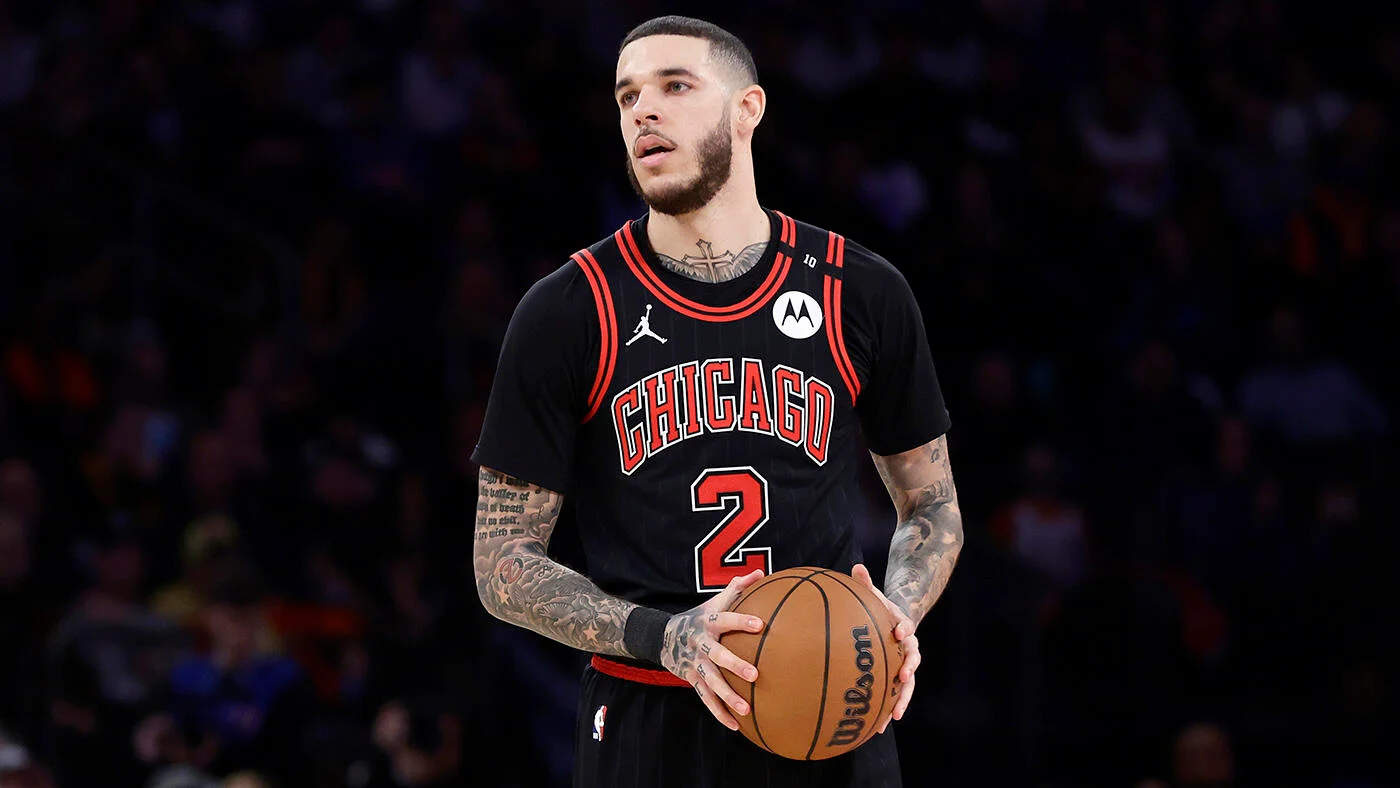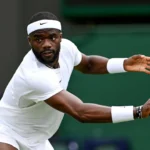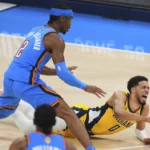The National Basketball Association (NBA) trade market is heating up as teams begin to finalize their rosters for the upcoming season.
In a significant move that sends ripples across the league, the Chicago Bulls have traded Lonzo Ball to the Cleveland Cavaliers in exchange for Isaac Okoro. This transaction, first reported by ESPN sources, represents a calculated gamble for both franchises, addressing immediate needs and long-term strategic objectives. The trade involves players at different stages of their careers, each bringing a unique set of skills and circumstances to their new teams.
For the Cavaliers, acquiring Ball offers a potential solution to their point guard depth, especially with impending free agency decisions and a key injury to their All-Star guard. For the Bulls, it signifies a pivot, bringing in a younger, defensive-minded forward. The implications of this trade extend beyond just player-for-player exchanges, touching upon salary cap management, roster construction, and immediate competitive aspirations. As the NBA off-season unfolds, this trade stands out as a pivotal moment, potentially reshaping the dynamics of both the Eastern Conference and the careers of the players involved.
Lonzo Ball’s Journey: From Hope to Health Concerns
Lonzo Ball’s career has been marked by flashes of brilliance intertwined with persistent injury challenges, culminating in this significant trade.
Navigating Persistent Injuries
Lonzo Ball, now 27 years old, has seen his career significantly impacted by a series of debilitating injuries. His tenure with the Chicago Bulls, which began with high hopes, was unfortunately cut short by a persistent left knee issue. The injury initially arose during the 2021-22 season, which was his very first year with the Bulls. What started as a promising start quickly devolved into a prolonged battle with pain and rehabilitation. Ball underwent several initial procedures in an attempt to address the knee problem, but these efforts ultimately failed to provide a lasting solution.
The severity of his condition necessitated a more drastic intervention. In March 2023, Ball underwent a meniscus and cartilage transplant in his left knee. This complex surgical procedure aimed to fully repair the damaged tissues and provide a pathway back to competitive basketball. The recovery from such an extensive surgery is typically long and arduous. Consequently, Ball was sidelined for the entirety of the 2022-23 and 2023-24 seasons, a significant period that kept him off the court for two full years.
This past season, he attempted a comeback, playing in 35 games. However, his return was again interrupted when he was sidelined since the beginning of March due to a right wrist sprain. These recurring health setbacks have undoubtedly cast a shadow over his career, limiting his on-court impact despite his undeniable talent. His statistics from this past season, where he averaged 7.6 points, 3.4 rebounds, and 3.3 assists, reflect a player who was trying to find his rhythm amidst physical challenges. This history of injuries makes his acquisition by the Cavaliers a calculated risk, betting on his potential full recovery and return to form.
Contractual Implications for the Cavaliers
Lonzo Ball’s contract structure plays a crucial role in its palatability for the Cleveland Cavaliers, particularly given their current salary cap situation. Ball’s current deal is set at two years and $20 million, which translates to an average of $10 million per year. What makes this contract particularly attractive from a team management perspective is the inclusion of a team option for the 2026-27 season. This option provides the Cavaliers with significant financial flexibility, allowing them to assess Ball’s health and performance over the next two years before committing to the final year of the deal.
If his injury concerns persist or his performance doesn’t meet expectations, the Cavaliers have the option to decline that year, avoiding a potentially undesirable cap hit.
This flexibility is especially critical for the Cavaliers as they navigate a tight financial landscape. The team is projected to enter the 2025-26 season approximately $12 million over the NBA’s second apron of the salary cap. Exceeding the second apron triggers harsher luxury tax penalties and restricts a team’s ability to make certain roster moves. Furthermore, the Cavaliers are also dealing with a major financial commitment to their young star, Evan Mobley.
As an All-Star and Defensive Player of the Year, Mobley is receiving a substantial $45 million bonus on his rookie maximum contract. This bonus significantly impacts the team’s overall cap sheet. In this context, Ball’s relatively manageable contract, with its built-in team option, becomes “more palatable” for the Cavaliers. It allows them to acquire a player with significant upside without further exacerbating their luxury tax concerns or locking themselves into a long-term, expensive commitment for an injury-prone asset. This strategic financial maneuver makes the trade sensible from a cap management perspective.
Cavaliers’ Strategic Play: Bolstering the Backcourt
The Cleveland Cavaliers’ acquisition of Lonzo Ball is a deliberate move aimed at fortifying their backcourt and adapting to current roster challenges.
Filling a Point Guard Need
For the Cleveland Cavaliers, the acquisition of Lonzo Ball directly addresses a pressing need for a fast-paced, defensive-minded point guard with size. At 6-foot-6, Ball offers a unique combination of stature and playmaking ability from the guard position, allowing him to see over defenders and impact plays on both ends of the court. This move is particularly timely as the franchise prepares for the potential departure of Ty Jerome to another team in free agency. Jerome’s potential exit would leave a void in their guard rotation, making Ball an immediate fit to absorb those minutes and responsibilities.
The Cavaliers’ interest in Ball is not new; it has been a long-term strategic target for their front office. Cavaliers president of basketball operations Koby Altman and his staff have reportedly targeted Ball for months. Their sustained interest indicates a deep belief in his talent and his potential fit within their system, despite his recent injury history.
They had been inquiring about him as early as the February trade deadline, showcasing their persistent pursuit. This sustained effort ultimately culminated in the Cavaliers successfully finalizing the deal on Saturday, bringing a player they’ve coveted into their ranks. Ball’s ability to push the pace, create opportunities for teammates with his exceptional passing vision, and provide strong perimeter defense aligns well with the Cavaliers’ desire to maintain a competitive and well-rounded backcourt, especially as they look towards the upcoming season.
Navigating Injury Concerns and Roster Depth
The Cavaliers’ backcourt dynamics are further complicated by the recent injury to their All-Star guard, Darius Garland. Garland underwent surgery earlier this month to repair a left big toe injury that had been troubling him during the recent playoffs. This injury, while common in basketball, is significant enough to require a substantial recovery period. The Cavaliers released a statement indicating that they expect Garland to “make a full recovery and resume basketball activities by the start of training camp” in October. This optimistic outlook, however, comes with a caveat.
Sources close to ESPN have indicated that despite the hopeful recovery timeline, Garland is “likely to miss time to start the regular season.” This potential absence at the beginning of the campaign underscores the immediate need for a capable point guard like Lonzo Ball. Ball’s arrival provides crucial depth and a reliable ball-handler who can initiate offense and manage the pace of the game in Garland’s absence.
His defensive prowess also offers an added layer of protection, especially when facing strong opposing guards. This acquisition allows the Cavaliers to avoid starting the season shorthanded in a key position, ensuring that their offensive flow and defensive integrity are maintained while Garland works his way back to full health. It provides a vital insurance policy and strengthens their guard rotation, allowing them to compete effectively from day one.
Retaining Key Free Agents
In addition to acquiring Lonzo Ball, the Cleveland Cavaliers have also successfully addressed another critical roster concern by retaining a valuable free agent. Sources close to ESPN have confirmed that free agent guard Sam Merrill intends to sign a four-year, $38 million contract to stay with the Cavaliers. This significant investment underscores Merrill’s value to the team, particularly as a sharpshooting specialist. Merrill has proven to be a reliable perimeter threat, providing crucial spacing and scoring from beyond the arc. His ability to knock down three-pointers consistently is a highly coveted skill in today’s NBA, and re-signing him ensures that the Cavaliers maintain an important offensive weapon.
Retaining Merrill is a shrewd move that complements the acquisition of Lonzo Ball. While Ball brings playmaking and defense, Merrill offers consistent outside shooting, balancing the team’s backcourt capabilities. This commitment to Merrill also reflects the Cavaliers’ broader strategy of building a cohesive roster around their core pieces. By securing key role players like Merrill, they ensure that the team has the necessary depth and specialized skills to support their star players. This multi-faceted approach – acquiring new talent while retaining valuable existing players – demonstrates the Cavaliers’ comprehensive effort to strengthen their roster for sustained competitiveness in the demanding Eastern Conference.
Bulls’ New Direction: Adding a “3-and-D” Forward
For the Chicago Bulls, the trade of Lonzo Ball for Isaac Okoro signals a shift in their roster construction, bringing in a specific archetype of player.
Bolstering Wing Depth and Defense
The trade provides the Chicago Bulls with Isaac Okoro, a 24-year-old forward who fits the valuable “3-and-D” archetype. In today’s NBA, a “3-and-D” player is highly coveted, referring to an athlete who excels at consistently making three-point shots (the “3”) and playing strong perimeter defense (the “D”). This type of player is essential for creating floor spacing on offense and guarding multiple positions on defense, fitting seamlessly into various team schemes. Okoro appeared in 55 games during the past season, showcasing his ability to contribute consistently to an NBA rotation.
While his scoring averages of 6.1 points, 2.4 rebounds, and 1.2 assists might not jump off the stat sheet, his true value lies in his defensive capabilities and his improving three-point shot. Okoro has built a reputation as a tenacious and versatile defender, capable of guarding opposing wings and even some guards. His athleticism and effort on that end of the court are highly valued. Furthermore, his career three-point shooting percentage stands at 35.1%.
While this figure indicates room for further improvement, it suggests that he is a credible threat from beyond the arc, forcing defenses to respect his shot. This is crucial for the Bulls, as having more players who can space the floor opens up driving lanes for their star players and improves overall offensive flow. Acquiring Okoro allows the Bulls to add depth at the forward position, infuse their lineup with defensive tenacity, and bring in a younger player with potential for continued development. This move aligns with a strategy of building a more balanced and defensively capable roster around their existing talent.
Future Outlook for Chicago
The acquisition of Isaac Okoro also implies a strategic shift in the Chicago Bulls’ long-term outlook and roster construction. By trading Lonzo Ball, who has been sidelined for significant periods due to injury and carried a substantial contract, the Bulls gain a younger, healthier asset in Okoro. While Okoro’s scoring output is modest, his consistent defensive effort and potential as a “3-and-D” player align with modern NBA trends. This move may free up some salary cap flexibility in the future, as Okoro’s contract is likely more manageable than a fully guaranteed deal for Ball would have been if he had remained with the Bulls beyond his current contract structure.
This trade could signal a continued emphasis on defensive capabilities and athletic wings for the Bulls, complementing their existing core. It also potentially opens up opportunities for other guards on their roster to step into larger roles if they were previously vying for minutes with Ball. The Bulls will now look to integrate Okoro into their system, developing his offensive game further while immediately benefiting from his defensive prowess. This transaction is a calculated step for Chicago, aiming to build a more resilient and balanced team that can compete more consistently in the competitive Eastern Conference.
Reshaping Futures for Bulls and Cavaliers
The trade sending Lonzo Ball to the Cleveland Cavaliers for Isaac Okoro marks a significant pivot for both NBA franchises. For the Cavaliers, this acquisition addresses immediate needs for a versatile point guard, especially with Darius Garland’s injury and Ty Jerome’s potential free agency. Ball’s contract, with its team option, provides financial flexibility as Cleveland navigates its salary cap. Their long-standing interest in Ball underscores a belief in his talent and fit within their system.
Conversely, the Chicago Bulls gain a valuable “3-and-D” forward in Isaac Okoro, enhancing their wing depth and defensive capabilities. This move signals a potential re-evaluation of their roster, prioritizing younger, healthy assets. Both teams have made calculated decisions aimed at strengthening their positions for the upcoming season and beyond, setting the stage for intriguing developments in the Eastern Conference.








